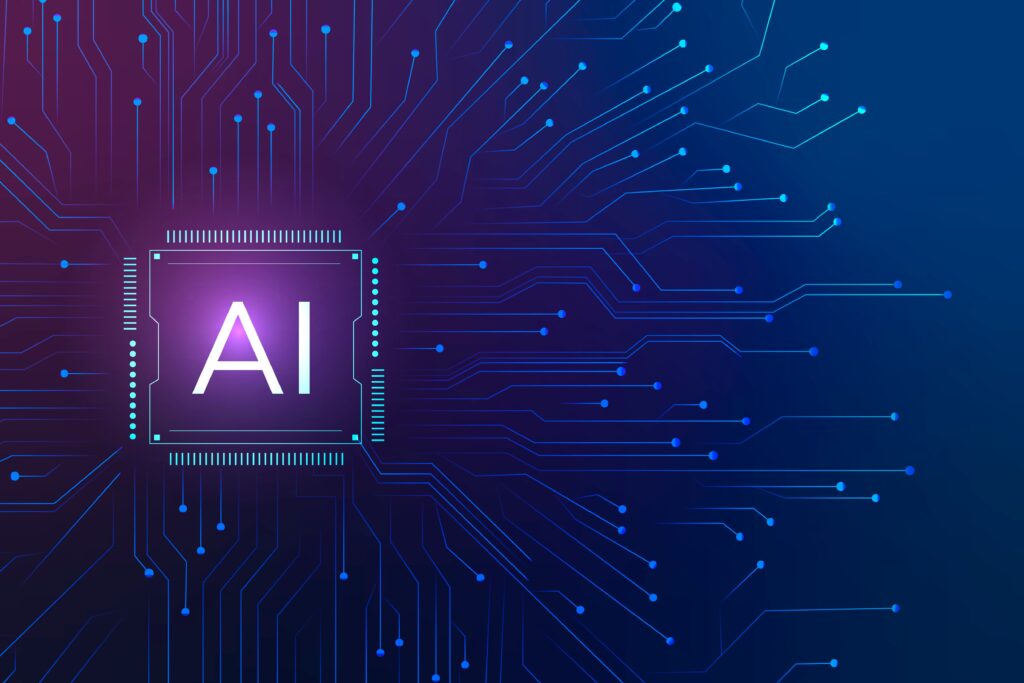A Comprehensive Guide to Artificial Intelligence
Introduction - Artificial Intelligence
Artificial Intelligence (AI) has become a ubiquitous term, but for those unfamiliar with the field, it can feel like a complex labyrinth. Fear not! This blog post is your roadmap, guiding you through the fascinating world of AI and helping you understand its capabilities and applications.
What Is Artificial Intelligence (AI)?
AI isn’t about robots taking over the world (although that makes for great movies). In simpler terms, AI is the intelligence exhibited by machines. It’s the ability of a computer program to mimic human cognitive functions like learning, problem-solving, and decision-making. Think of a program that analyzes millions of chess games to make strategic moves, or a spam filter that identifies suspicious emails based on patterns it has learned. These are all examples of AI in action.
Understanding AI : How Does It Work?
There’s no magic formula for creating AI, but there are some key tools used to empower machines with intelligence. Algorithms are the workhorses of AI. These are essentially sets of instructions that a computer follows to process information and make decisions. Here are some popular AI approaches:
Machine Learning: Imagine a student relentlessly studying countless practice problems. That’s the essence of machine learning. Machines are trained on massive amounts of data, allowing them to identify patterns and make predictions without explicit programming. For instance, a machine learning program trained on millions of images can analyze a new picture and determine if it contains a cat. The more data the machine processes, the better it becomes at recognizing patterns and making accurate predictions.
Deep Learning: Deep learning is a subfield of machine learning that takes inspiration from the very structure of the human brain. Deep learning algorithms utilize artificial neural networks, which are interconnected layers of processing units designed to mimic the way neurons work together in our brains. These networks can learn complex patterns from data, making them particularly adept at tasks like image recognition and natural language processing. Think of a deep learning program trained on countless cat videos – it can then analyze a new video and not only identify the presence of a cat, but also recognize its breed or behavior.
Other AI Techniques: In addition to machine learning and deep learning, other techniques contribute to the vast field of Artificial Intelligence. These include natural language processing (enabling machines to understand and respond to human language), computer vision (allowing machines to interpret and analyze visual information), and reinforcement learning (where machines learn through trial and error, like an AI agent playing a video game).
Types of Artificial Intelligence
There are different ways to categorize AI, but a common approach focuses on its capabilities:
Artificial Narrow Intelligence (ANI): This is the most prevalent form of AI today. ANIs are highly skilled at specific tasks, like playing chess or filtering spam. Most of the real-world AI applications we encounter today fall under ANI.

Artificial General Intelligence (AGI): This hypothetical type of AI would possess human-level intelligence and be able to perform any intellectual task that a human can. AGI is still in the realm of science fiction, and there’s ongoing debate about its feasibility.
Artificial Super Intelligence (ASI): This even more theoretical concept refers to an AI surpassing human intelligence in all aspects. The potential risks and benefits of ASI are a topic of much discussion among AI researchers and ethicists.
AI History: Key Dates and Names
The quest to create intelligent machines has captivated humanity for centuries. Let’s delve into the fascinating history of Artificial Intelligence (AI), highlighting key milestones and the brilliant minds behind them:
Early Influences (Pre-1940s):
- Philosophers and mathematicians pondered the nature of intelligence and the possibility of replicating it in machines.
Birth of AI (1940s – 1950s):
- 1941: Alan Turing, a pioneer in computer science, explores the concept of machine intelligence in a seminal (but lost) paper.
- 1943: Warren McCulloch and Walter Pitts introduce the concept of artificial neural networks, laying the groundwork for machine learning.
- 1950: Alan Turing publishes his groundbreaking paper, “Computing Machinery and Intelligence,” which proposes the Turing Test, a test of a machine’s ability to exhibit intelligent behavior equivalent to, or indistinguishable from, that of a human.
- 1956: John McCarthy, Marvin Minsky, Nathaniel Rochester, and Claude Shannon organize the Dartmouth Workshop, considered the founding event of AI research. The term “artificial intelligence” is coined here.
Early Successes and Challenges (1950s – 1980s):
- Researchers explored various approaches to AI, including symbolic reasoning, expert systems, and game playing.
- 1960s: The first industrial robot, Unimate, and the chatbot ELIZA, which mimicked Rogerian psychotherapy, are developed.
- 1970s: The limitations of early AI approaches become apparent, leading to the “AI Winter,” a period of decreased funding and pessimism.
Renewal and Advancements (1980s – 2000s):
- 1980s: Expert systems gain traction in specific domains, while research in neural networks is revived with the backpropagation algorithm.
- 1990s: Deep Blue, an IBM chess computer, defeats Garry Kasparov, the world chess champion.
Deep Learning Revolution (2000s – Present):
- 2000s: Increased computational power and vast amounts of data (Big Data) fuel the rise of deep learning, a powerful subset of machine learning inspired by the structure and function of the brain.
- 2010s: Deep learning achieves breakthroughs in image recognition, natural language processing, and other areas. Large language models like me emerge.
The Ever-Evolving Landscape of AI:
The field of AI is constantly evolving. Today, researchers are exploring areas like explainable AI, human-AI collaboration, and the ethical implications of AI.
This is just a glimpse into the rich history of AI. There are many other notable names and advancements that have shaped this field. For a deeper dive, you can explore resources like the Wikipedia article on the History of Artificial Intelligence https://en.wikipedia.org/wiki/Artificial_intelligence.
What Are the 4 Types of AI?
AI can be broadly categorized into four main types, each with varying levels of sophistication:
- Reactive Machines: These are the simplest form of Artificial Intelligence. They operate based on pre-programmed rules and respond to stimuli in a predetermined way. Think of a vending machine that dispenses a drink when you insert money, or a chess-playing computer programmed with a vast library of opening moves and responses. Reactive machines have no ability to learn or adapt to new situations.
Limited Memory Machines: These Artificial Intelligence systems take things a step further. They can store and access past experiences (limited memory) to inform their decisions. For example, a self-driving car uses limited memory AI to analyze past encounters with traffic signals and adjust its speed accordingly. Another example is a spam filter that learns to identify new spam tactics based on past encounters.
Theory of Mind AI: This type of Artificial Intelligence, still theoretical, goes beyond simply reacting or learning from experience. It involves the ability to understand the mental state of others – their thoughts, intentions, and emotions. Theory of mind AI could allow machines to empathize with humans, anticipate their needs, and interact more naturally. While significant advancements have been made, true theory of mind AI remains a topic of ongoing research.
Self-Aware AI: This is the realm of science fiction – machines that exhibit consciousness and self-awareness. While such AI may exist someday, it’s currently beyond the capabilities of our technology.
Examples of AI in Action
AI is already woven into the fabric of our daily lives. Here are some real-world applications:
Unveiling Faces with Facial Recognition: This technology powers features like unlocking smartphones with facial scans, tagging friends in photos on social media, and even security systems that identify authorized personnel.
Taming the Inbox with Spam Filtering: Ever wondered how your inbox stays relatively free from unwanted emails? AI-powered spam filters analyze incoming messages, identifying suspicious patterns and filtering out spam before it clutters your inbox.
Recommending the Perfect Movie Night: The bane or boon of indecisiveness – recommendation systems! These AI-powered algorithms analyze your past preferences and browsing behavior, suggesting movies on Netflix or products on Amazon that you might enjoy. Have you ever noticed how eerily accurate these recommendations can be? Thank Artificial Intelligence for that!
Conversations with Virtual Assistants: They answer our questions, set reminders, and even play our favorite music – virtual assistants like Siri and Alexa are powered by AI. These intelligent agents use natural language processing to understand our voice commands and complete tasks, making our lives a touch more convenient.
The Road to Autonomy: Self-Driving Cars: While still under development, AI is revolutionizing the transportation industry with self-driving cars. These vehicles use a combination of sensors, cameras, and AI algorithms to navigate roads, perceive their surroundings, and make decisions in real-time, paving the way for a future with safer and more efficient transportation.
Week AI v/s Strong AI
| Feature | Weak AI (Narrow AI) | Strong AI (Artificial General Intelligence) |
|---|---|---|
| Focus | Specific tasks | General intelligence |
| Capabilities | Performs well-defined tasks | Learns, reasons, solves problems |
| Current Status | Dominant form of AI | Hypothetical |
| Consciousness | No | Potentially (highly debated) |
| Example | Chess program, spam filter | Sentient robot (from science fiction) |
Examples of AI in Action
AI is already woven into the fabric of our daily lives. Here are some real-world applications:
Unveiling Faces with Facial Recognition: This technology powers features like unlocking smartphones with facial scans, tagging friends in photos on social media, and even security systems that identify authorized personnel.
Taming the Inbox with Spam Filtering: Ever wondered how your inbox stays relatively free from unwanted emails? AI-powered spam filters analyze incoming messages, identifying suspicious patterns and filtering out spam before it clutters your inbox.
Recommending the Perfect Movie Night: The bane or boon of indecisiveness – recommendation systems! These AI-powered algorithms analyze your past preferences and browsing behavior, suggesting movies on Netflix or products on Amazon that you might enjoy. Have you ever noticed how eerily accurate these recommendations can be? Thank AI for that!
Conversations with Virtual Assistants: They answer our questions, set reminders, and even play our favorite music – virtual assistants like Siri and Alexa are powered by AI. These intelligent agents use natural language processing to understand our voice commands and complete tasks, making our lives a touch more convenient.
The Road to Autonomy: Self-Driving Cars: While still under development, AI is revolutionizing the transportation industry with self-driving cars. These vehicles use a combination of sensors, cameras, and AI algorithms to navigate roads, perceive their surroundings, and make decisions in real-time, paving the way for a future with safer and more efficient transportation.
Ethical use of Artificial Intelligence
Ethical AI is a crucial aspect of ensuring that artificial intelligence is developed and used for good. Here’s a breakdown of key principles and considerations:
Core Principles:
- Fairness and Non-discrimination: AI systems shouldn’t perpetuate biases or discrimination based on factors like race, gender, or religion. Data used to train AI models needs to be fair and representative
- Transparency and Explainability: We should understand how AI systems arrive at decisions. This is vital for building trust and addressing potential biases.
- Privacy and Security: User data privacy must be protected. AI systems should be secure against hacking and misuse.
- Accountability: There should be clear accountability for the development, deployment, and outcomes of AI systems.
- Human Control: Humans should remain in control of AI systems, ensuring they are used for beneficial purposes.
- Environmental Sustainability: The development and use of AI should be done in an environmentally conscious way.
Why Ethical AI Matters:
- Biased decision-making: AI systems trained on biased data can perpetuate discrimination in areas like loan approvals, hiring practices, or criminal justice.
- Privacy violations: AI systems that collect and analyze personal data raise privacy concerns.
- Job displacement: Automation through AI could lead to job losses in certain sectors.
- Autonomous weapons: The use of AI in autonomous weapons raises ethical and safety concerns.
Conclusion:
Artificial intelligence is no longer science fiction; it’s woven into the fabric of our lives. From the moment we wake up to the devices we use and the services we rely on, AI is there, working behind the scenes. As this technology continues to evolve, the possibilities are boundless. AI has the potential to revolutionize industries, solve complex problems, and empower us to create a better future. However, the key to ensuring a positive outcome lies in responsible development and ethical implementation. By fostering open discussions, prioritizing human well-being, and working collaboratively, we can harness the power of AI to create a future that benefits all.




Pingback : The Machine Muse LLMs: Transforming Text with Machine Minds